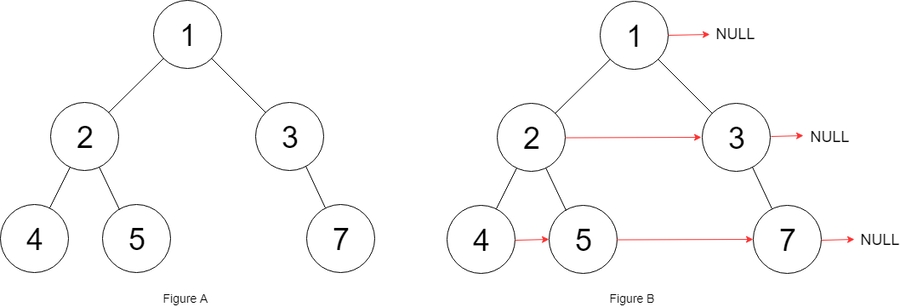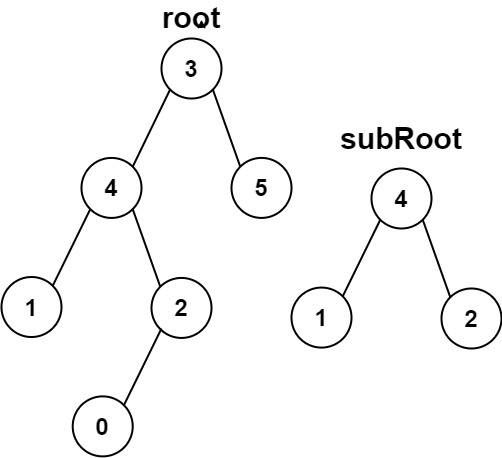2022-06-03
Description
Given a binary tree
struct Node {
int val;
Node *left;
Node *right;
Node *next;
}Populate each next pointer to point to its next right node. If there is no next right node, the next pointer should be set to NULL.
Initially, all next pointers are set to NULL.
Example 1:

Input: root = [1,2,3,4,5,null,7]
Output: [1,#,2,3,#,4,5,7,#]
Explanation: Given the above binary tree (Figure A), your function should populate each next pointer to point to its next right node, just like in Figure B. The serialized output is in level order as connected by the next pointers, with '#' signifying the end of each level.Example 2:
Constraints:
The number of nodes in the tree is in the range
[0, 6000].-100 <= Node.val <= 100
Follow-up:
You may only use constant extra space.
The recursive approach is fine. You may assume implicit stack space does not count as extra space for this problem.
Solution
Approach #0
Approach #1
Description
Given the roots of two binary trees root and subRoot, return true if there is a subtree of root with the same structure and node values of subRoot and false otherwise.
A subtree of a binary tree tree is a tree that consists of a node in tree and all of this node's descendants. The tree tree could also be considered as a subtree of itself.
Example 1:

Example 2:

Constraints:
The number of nodes in the
roottree is in the range[1, 2000].The number of nodes in the
subRoottree is in the range[1, 1000].-10^4 <= root.val <= 10^4-10^4 <= subRoot.val <= 10^4
Solution
Approach #0
Last updated